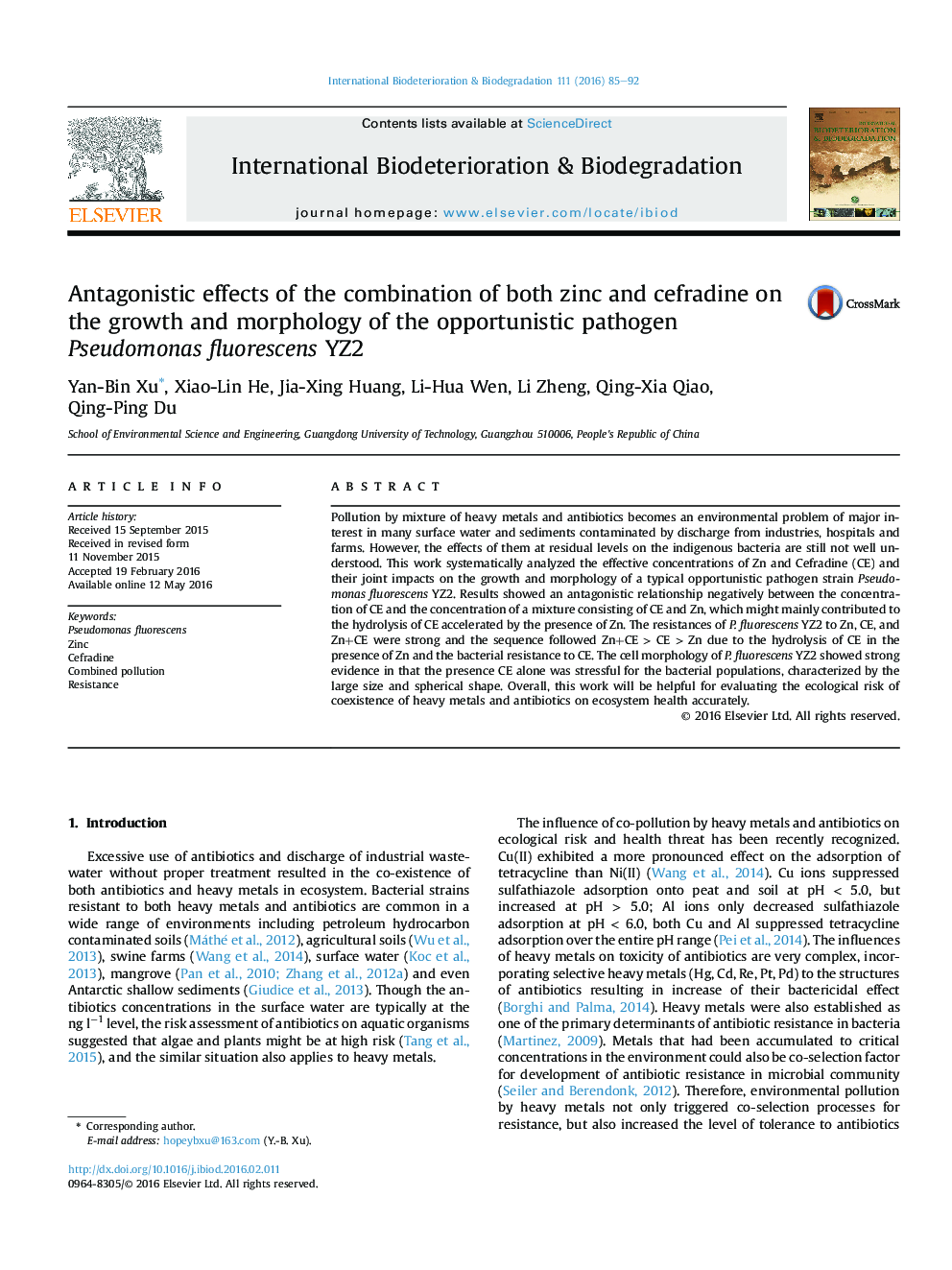| Article ID | Journal | Published Year | Pages | File Type |
|---|---|---|---|---|
| 4364247 | International Biodeterioration & Biodegradation | 2016 | 8 Pages |
•Pollution by mixed heavy metals and antibiotics becomes common.•The concentrations of CE and a mixture consisting of CE and Zn are antagonistic.•The resistances of P. fluorescens YZ2 to Zn, CE, and Zn-CE were in the turn from small to huge.•The bacterial populations stressed by CE were characterized by the large size and spherical shape.
Pollution by mixture of heavy metals and antibiotics becomes an environmental problem of major interest in many surface water and sediments contaminated by discharge from industries, hospitals and farms. However, the effects of them at residual levels on the indigenous bacteria are still not well understood. This work systematically analyzed the effective concentrations of Zn and Cefradine (CE) and their joint impacts on the growth and morphology of a typical opportunistic pathogen strain Pseudomonas fluorescens YZ2. Results showed an antagonistic relationship negatively between the concentration of CE and the concentration of a mixture consisting of CE and Zn, which might mainly contributed to the hydrolysis of CE accelerated by the presence of Zn. The resistances of P. fluorescens YZ2 to Zn, CE, and Zn+CE were strong and the sequence followed Zn+CE > CE > Zn due to the hydrolysis of CE in the presence of Zn and the bacterial resistance to CE. The cell morphology of P. fluorescens YZ2 showed strong evidence in that the presence CE alone was stressful for the bacterial populations, characterized by the large size and spherical shape. Overall, this work will be helpful for evaluating the ecological risk of coexistence of heavy metals and antibiotics on ecosystem health accurately.
Graphical abstractFigure optionsDownload full-size imageDownload as PowerPoint slide
